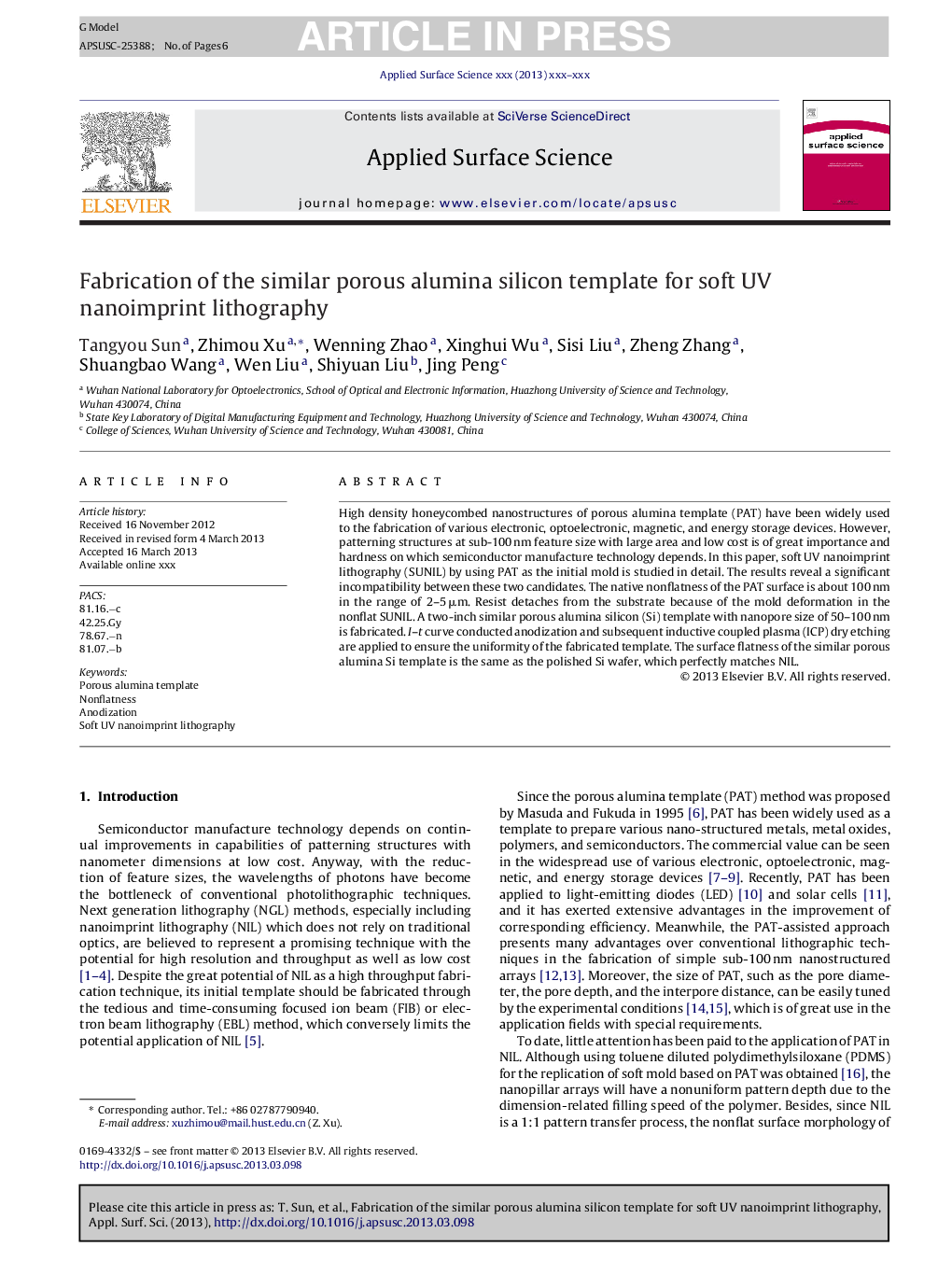| Article ID | Journal | Published Year | Pages | File Type |
|---|---|---|---|---|
| 5360092 | Applied Surface Science | 2013 | 6 Pages |
Abstract
High density honeycombed nanostructures of porous alumina template (PAT) have been widely used to the fabrication of various electronic, optoelectronic, magnetic, and energy storage devices. However, patterning structures at sub-100 nm feature size with large area and low cost is of great importance and hardness on which semiconductor manufacture technology depends. In this paper, soft UV nanoimprint lithography (SUNIL) by using PAT as the initial mold is studied in detail. The results reveal a significant incompatibility between these two candidates. The native nonflatness of the PAT surface is about 100 nm in the range of 2-5 μm. Resist detaches from the substrate because of the mold deformation in the nonflat SUNIL. A two-inch similar porous alumina silicon (Si) template with nanopore size of 50-100 nm is fabricated. I-t curve conducted anodization and subsequent inductive coupled plasma (ICP) dry etching are applied to ensure the uniformity of the fabricated template. The surface flatness of the similar porous alumina Si template is the same as the polished Si wafer, which perfectly matches NIL.
Related Topics
Physical Sciences and Engineering
Chemistry
Physical and Theoretical Chemistry
Authors
Tangyou Sun, Zhimou Xu, Wenning Zhao, Xinghui Wu, Sisi Liu, Zheng Zhang, Shuangbao Wang, Wen Liu, Shiyuan Liu, Jing Peng,
